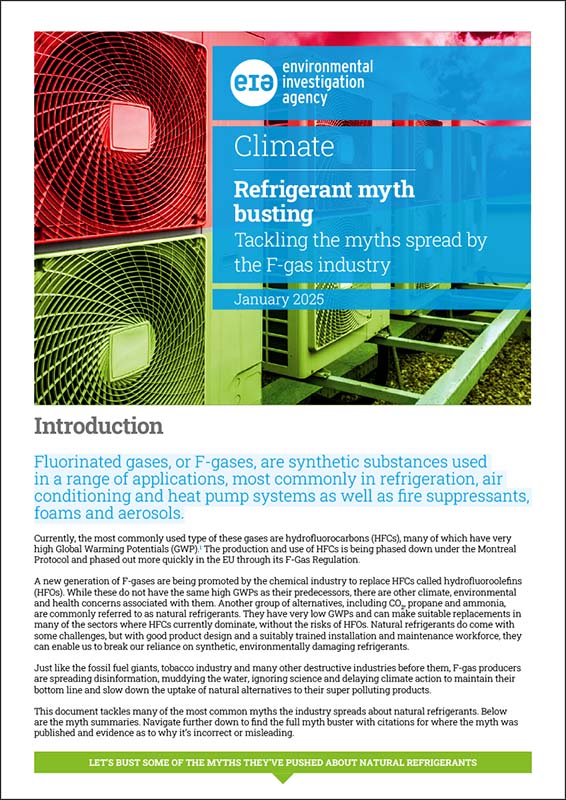
Refrigerant myth busting
This new briefing busts some of the myths being pushed about the viability of alternative natural refrigerants.
- Areas of work:
- Campaigns:




This new briefing busts some of the myths being pushed about the viability of alternative natural refrigerants.
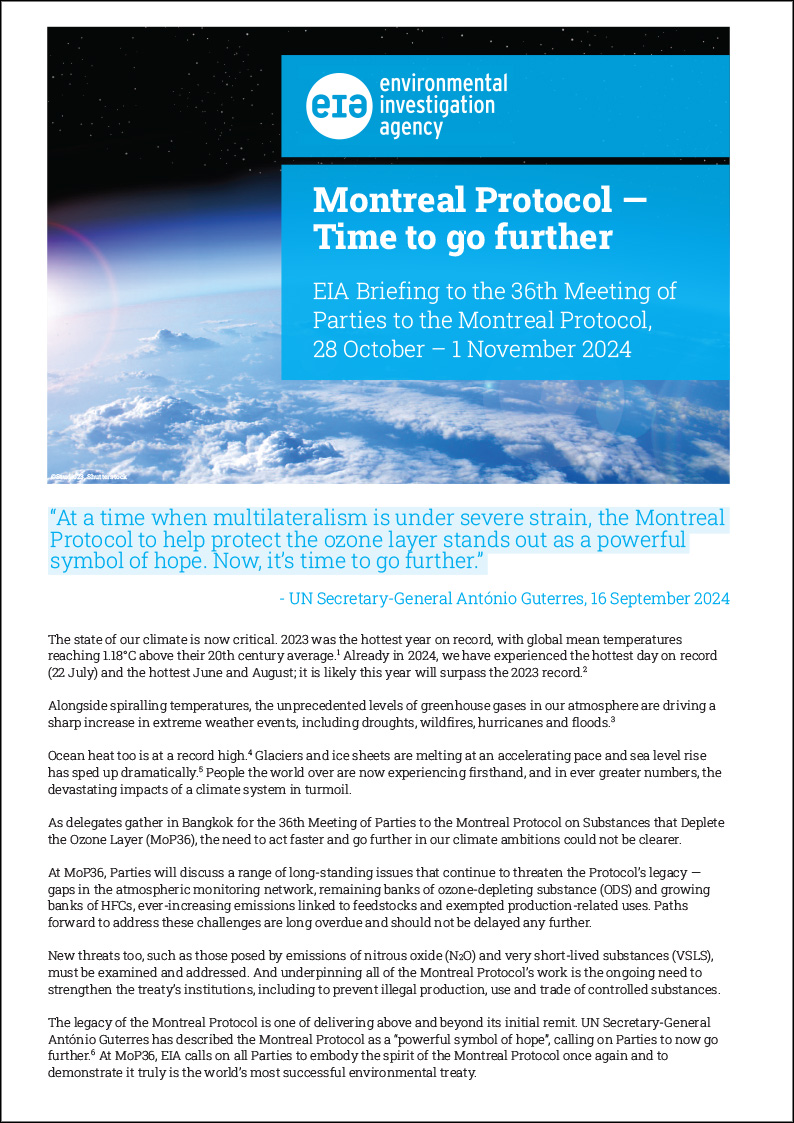
The legacy of the Montreal Protocol is one of delivering above and beyond its initial remit. UN Secretary-General António Guterres has described the Montreal Protocol as a “powerful symbol of hope”, calling on Parties to now go further. At MoP36, EIA calls on all Parties to embody the spirit of the Montreal Protocol once again and to demonstrate it truly is the world’s most successful environmental treaty.
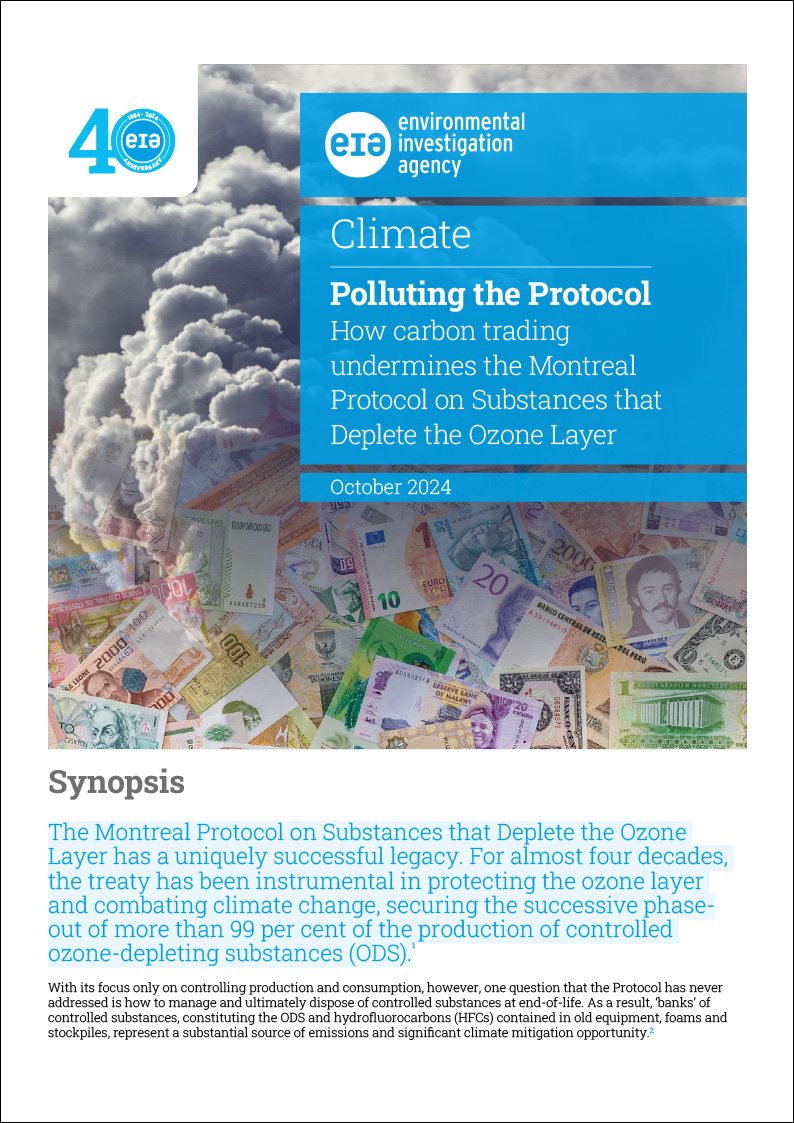
The Montreal Protocol on Substances that Deplete the Ozone Layer has a uniquely successful legacy. For almost four decades, the treaty has been instrumental in protecting the ozone layer and combating climate change, securing the successive phaseout of more than 99 per cent of the production of controlled ozone-depleting substances (ODS).
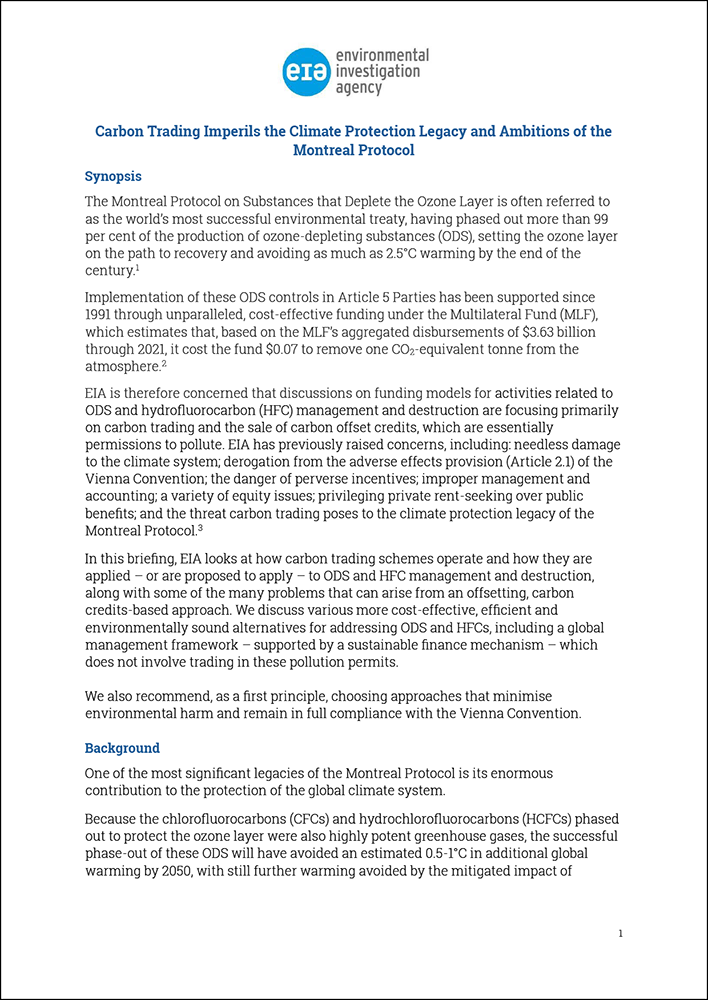
This briefing outlines EIA’s concerns over carbon trading and the sale of carbon offset credits to fund activities related to the management and destruction of ozone depleting substances (ODS) and hydrofluorocarbons (HFCs).
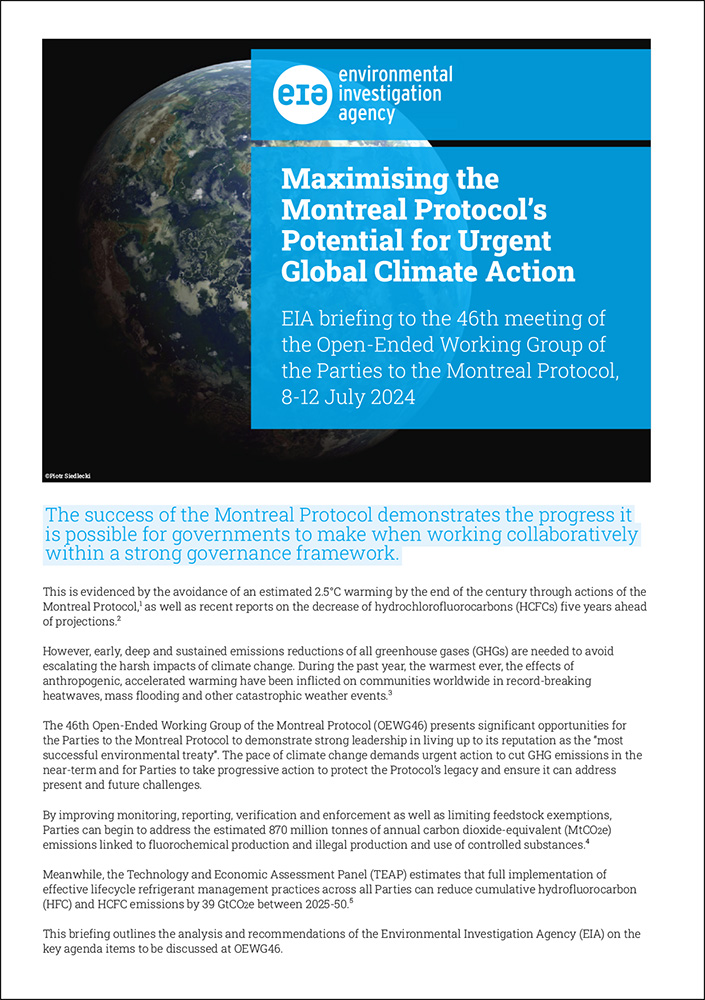
From 8th to 12th July 2024, the Parties to the Montreal Protocol will be attending the 46th Open-Ended Working Group (OEWG-46) in Montreal. EIA has produced a new briefing for the meeting, exploring the significant opportunities for the Parties to the Montreal Protocol to demonstrate strong leadership in living up to its reputation as the “most successful environmental treaty.”
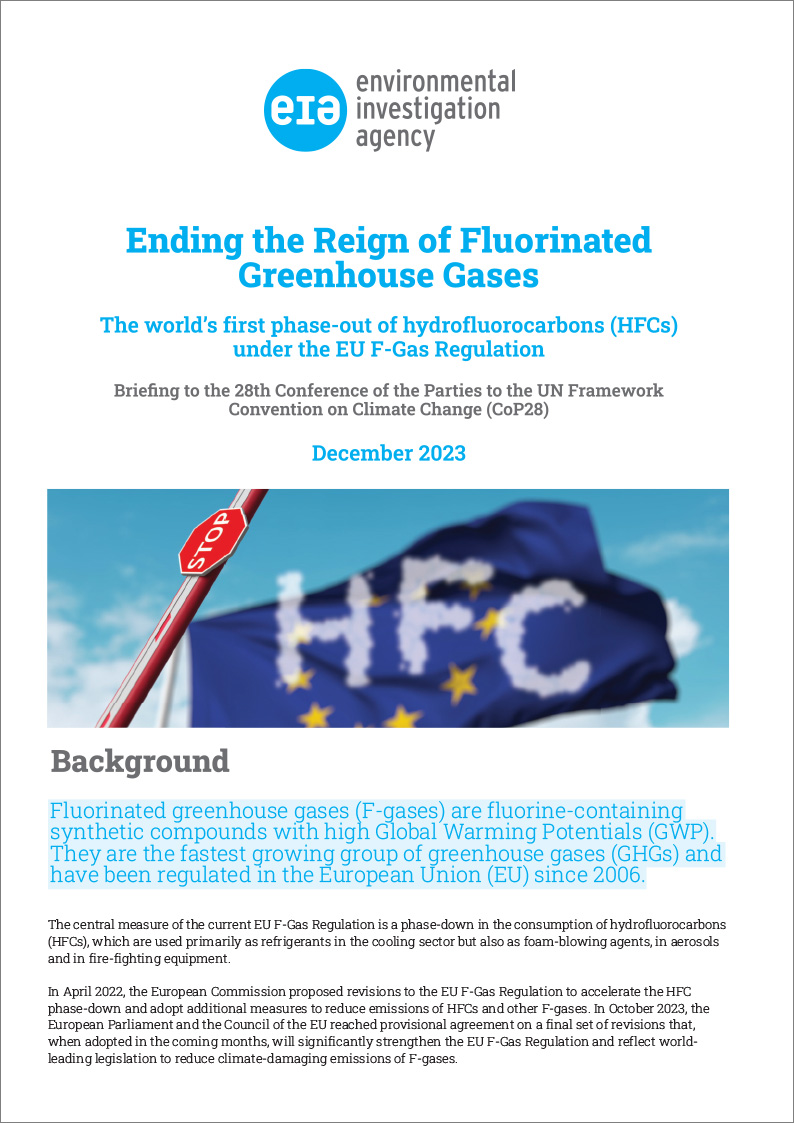
Fluorinated greenhouse gases (F-gases) are fluorine-containing synthetic compounds with high Global Warming Potentials (GWP). They are the fastest growing group of greenhouse gases (GHGs) and have been regulated in the European Union (EU) since 2006.